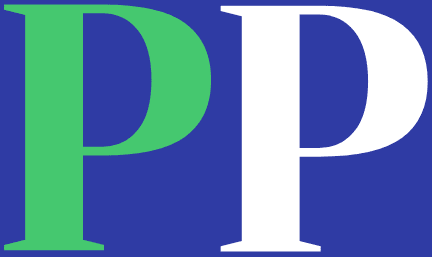Last updated Mar. 24, 2025 by Charles Zemub
Title: How to Access Home Equity During a Financial Emergency
Introduction
In times of financial crisis, homeowners might find themselves evaluating various options to stabilize their situation. One overlooked but potentially valuable resource is home equity. Home equity is essentially the portion of your property that you truly own outright, free from any mortgage obligations. This article will guide you through understanding, unlocking, and efficiently utilizing your home equity during a financial emergency. We will delve into different methods of accessing home equity, weigh their pros and cons, and provide real-life examples that illustrate their application.
Understanding Home Equity
Home equity is calculated as the difference between the current market value of your home and the remaining balance on your mortgage. For example, if your home is valued at $300,000 and you owe $150,000 on your mortgage, you have $150,000 in equity. Home equity builds over time as you pay down the mortgage and as the property value appreciates.
Methods to Access Home Equity
1. Home Equity Line of Credit (HELOC)
A Home Equity Line of Credit (HELOC) is a popular method of accessing home equity. It’s a revolving line of credit secured against your home, much like a credit card but with typically lower interest rates.
-
Advantages:
- Flexible; borrow as needed
- Pay interest only on the withdrawn amount
- Can provide a financial cushion in emergencies
-
Disadvantages:
- Variable interest rates can increase
- Your home is at risk if you can’t repay
- Possible fees and closing costs
- Example:
- Consider a homeowner who applies for a HELOC to cover unexpected medical expenses. They secure a credit line of $50,000 and only withdraw $10,000 initially, saving on unnecessary interest payments.
2. Home Equity Loan
A home equity loan provides a lump sum of money based on your equity, with a fixed interest rate and repayment schedule. It’s often referred to as a second mortgage.
-
Advantages:
- Fixed interest rates provide payment predictability
- Large sums available for significant expenses
-
Disadvantages:
- Long-term financial commitment
- Risk of foreclosure if default occurs
- Not as flexible as a HELOC
- Example:
- A homeowner needs $30,000 to consolidate high-interest credit card debt. A home equity loan allows them to lower their monthly debt service resulting in substantial savings over time.
3. Cash-Out Refinancing
Cash-out refinancing replaces your existing mortgage with a new, bigger one, providing the difference in cash.
-
Advantages:
- Potentially lower interest rate on the new mortgage
- Access to significant equity
-
Disadvantages:
- Higher monthly payments
- Closing costs can be expensive
- Extending the term means paying more interest over time
- Example:
- A homeowner refinances their $150,000 mortgage at a lower rate and takes out an additional $50,000 for home repairs and debt consolidation, thereby restructuring their financial obligations.
✓ Short Answer
In times of financial emergency, accessing your home equity can provide much-needed relief. Options include a Home Equity Line of Credit (HELOC), where you borrow as needed against your home’s value; a home equity loan, which offers a lump sum with fixed repayment terms; and cash-out refinancing, where you replace your mortgage for one with a higher principal, gaining access to the difference in cash. Each option has benefits and risks, so carefully assessing your financial situation and consulting with financial advisors is advisable.
4. Reverse Mortgage
Available for homeowners aged 62 or older, a reverse mortgage allows you to convert part of your home equity into cash without selling your home.
-
Advantages:
- No monthly mortgage payments required
- Can provide lifetime income as long as you live in the home
-
Disadvantages:
- Loan balance increases over time
- Hefty fees and interest reduce remaining equity
- Example:
- A senior homeowner uses a reverse mortgage to fund living expenses and medical care, allowing him/her to age in place comfortably.
Choosing the Right Option
Deciding which method of accessing home equity is appropriate for you depends on several factors including interest rates, repayment terms, and your financial situation. Consider the immediacy of your needs versus long-term repercussions when deciding.
Risks and Considerations
- Market Fluctuation: The real estate market can fluctuate, affecting home values and available equity.
- Repayment Capacity: Be realistic about your ability to meet repayment obligations.
- Consult Experts: Speak with financial advisors to evaluate your options carefully.
Conclusion
Accessing home equity is a pivotal tool for homeowners during financial emergencies, but it requires careful consideration and planning. By understanding the different methods, weighing the pros and cons, and evaluating personal circumstances, you can make informed decisions that provide financial stability and peace of mind.
FAQs
-
What is the main difference between a HELOC and a home equity loan?
- A HELOC is a revolving credit line with variable interest rates, whereas a home equity loan provides a lump sum at a fixed interest rate.
-
Is it safer to use a home equity loan over a HELOC?
- It depends on your financial situation. A home equity loan offers predictable payments, ideal for those who prefer fixed repayment schedules. A HELOC offers flexibility and is better suited for unpredictable expenses.
-
Are there tax benefits when accessing home equity?
- Mortgage interest on HELOCs and home equity loans may be deductible if used to buy, build, or improve your home, subject to tax regulations.
-
How does cash-out refinancing impact monthly mortgage payments?
- Cash-out refinancing tends to increase your mortgage principal, which can raise your monthly payments unless offset by a lower interest rate.
- What happens to my home’s equity with a reverse mortgage?
- As you borrow against your home’s value, the equity decreases and the loan balance increases, potentially leaving less for heirs.






